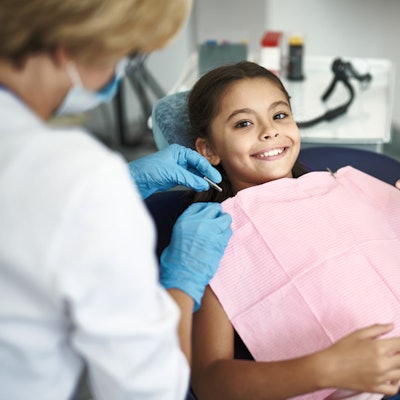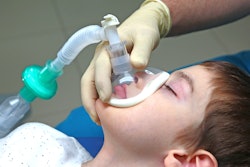
Clinicians can use 8% sevoflurane to safely induce anesthesia in children despite anecdotal reports that the sweet-smelling anesthetic can cause seizurelike, jerking movements, according to a recent review published in Pediatric Anesthesia.
Though epileptiform electroencephalographic (EEG) discharges, which are biomarkers for seizures and epilepsy, occur in children given sevoflurane, they are uncommon, and recommended strategies to mitigate against these discharges may be more harmful than beneficial, the author wrote.
"There is insufficient evidence to alter our practice based on the plausible presence of epileptiform EEG discharges in children anesthetized with sevoflurane at this time," wrote author, Dr. Jerrold Lerman of the department of anesthesiology at John R. Oishei Children's Hospital in Buffalo, NY (Pediatric Anesth, July 28, 2022).
For about 30 years, 8% sevoflurane was the standard for inducing anesthesia in children. After its introduction, clinicians reported isolated cases of jerking movements during induction in pediatric patients without epilepsy.
Concerns were heightened when reports of seizures and epileptiform EEG discharges surfaced in children being administered sevoflurane. Also, it triggered recommendations to cut the concentration of the anesthetic during induction. A more recent shift away from the use of nitrous oxide has had some dentists rethink the issue, the author wrote.
Most commonly, these movements occurred in the early years of sevoflurane. At the time, the practice was to increase the inspired concentration in increments of 1% to 1.5% every three to four breaths, which was the technique passed down from when the general anesthetic halothane was used.
With sevoflurane, this practice led to a protracted excitement phase, which was not obvious with halothane, because the latter has a potency that is 2.5-fold greater than the former. Nevertheless, clinicians learned that the excitement phase shortened and jerking movements ceased when the vaporizer dial was moved from 0% to 8% sevoflurane in a single turn. Also, it was noted that EEG discharges occurred more often when sevoflurane was administered than they did with propofol, Lerman wrote.
Past research
Several studies have reported EEG discharges in up to 6.5% of healthy, awake children without epilepsy. Longitudinal follow-up and EEG monitoring of 131 children between the ages 6 and 18 at the time of recording the initial EEG discharges yielded no instances of interictal tracings eight or nine years later.
Since there were no cases of epilepsy in this cohort, the authors concluded that isolated interictal epileptiform discharges fail to warn of long-term neurological sequela in children. Even when EEG tracings were recorded, only a few isolated reports of seizures occurred during or after sevoflurane anesthesia, Lerman wrote.
Proper use
Preferably during spontaneous or assisted respiration, clinicians should continue to induce anesthesia with sevoflurane, increasing the concentration in a single step from 0% to 8% in a background of nitrous oxide or air in a balance of oxygen.
Although sevoflurane can be induced in oxygen without nitrous oxide, this technique may result in a partial or complete lung collapse. To prevent a perioperative lung sequela when nitrous oxide isn't used, the carrier gas should be an air/oxygen combination with a maximum oxygen concentration of 60% or less. Also, continuous positive end-expiratory pressure should be added to further reduce the risk of lung collapse, he wrote.
While sevoflurane has been linked with curiosities and controversies, "the preponderance of evidence supports the practice of safely inducing anesthesia with 8% sevoflurane with or without nitrous oxide in children," Lerman wrote.




















